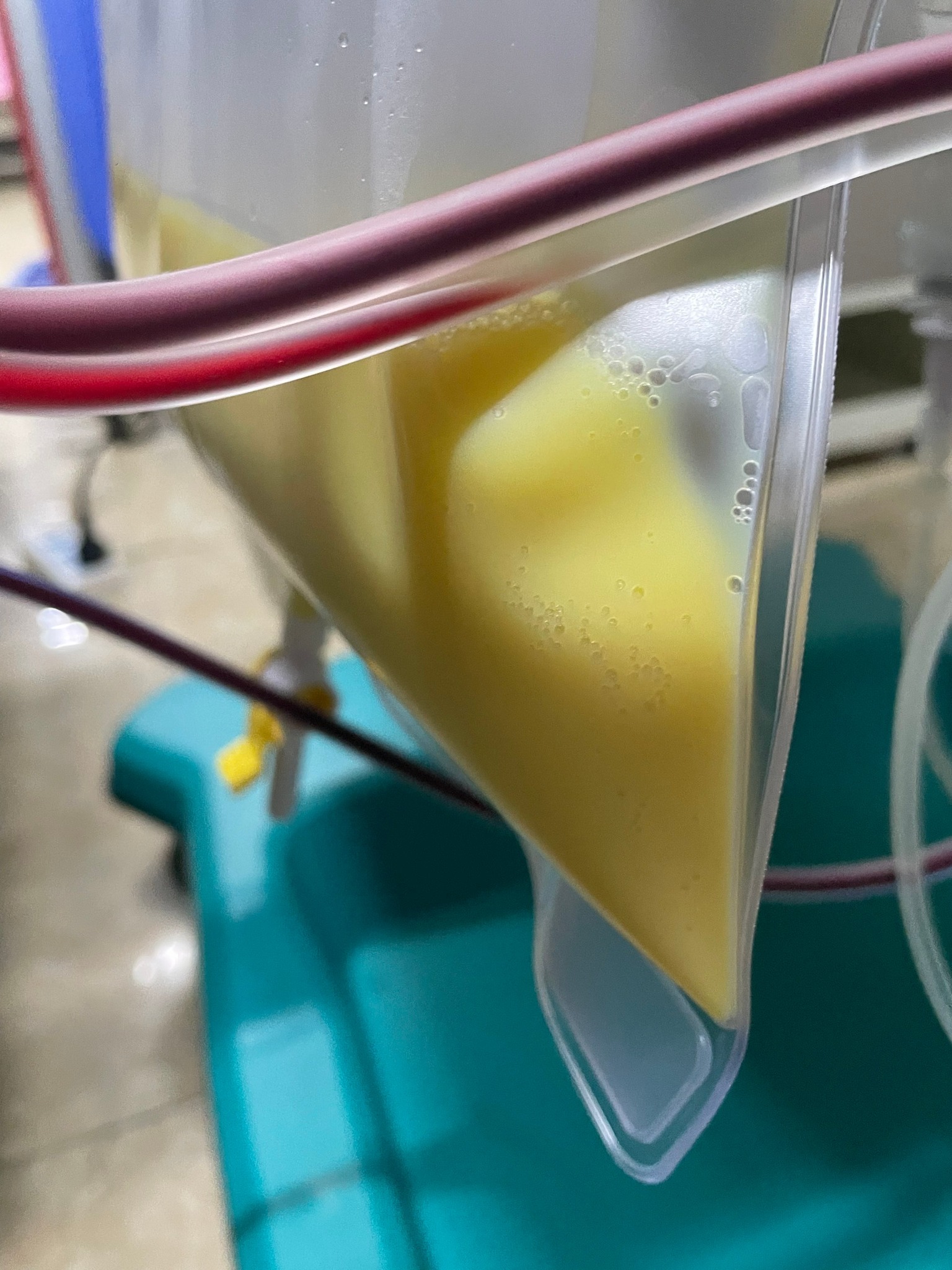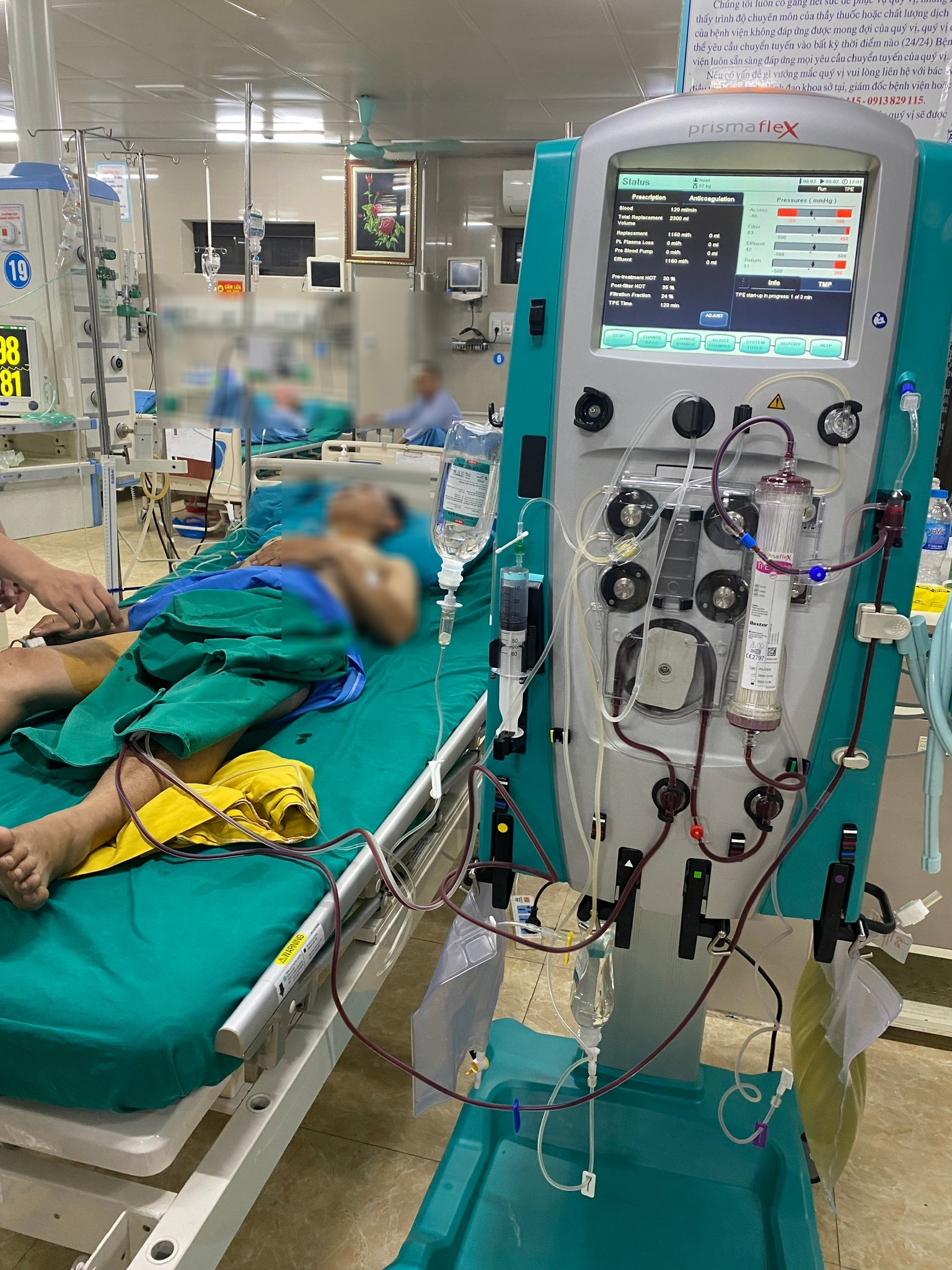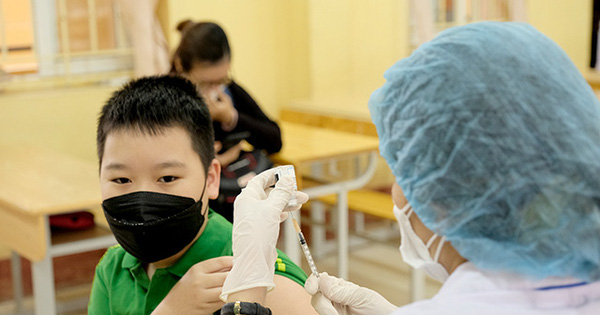The male patient’s blood is as white as milk
Doctors had to do an emergency plasma exchange on the patient overnight due to acute pancreatitis. If delayed, the patient can die quickly.
Doctors at Hung Vuong General Hospital, Phu Tho have just given emergency treatment to a 40-year-old male patient admitted to the hospital with severe pain in the epigastric region, abdominal distension, abdominal CT results: acute pancreatitis bathazal D, blood triglyceride test elevated: >55 mmol/L (while normal people are 0-2.3 mmol/L), the blood taken out is milky white. Immediately, the patient was assigned an emergency plasma exchange in the night.
The patient underwent plasma exchange. Currently, after plasma exchange, the patient has had a positive change, no longer has abdominal pain, and blood triglycerides decrease. The patient has a history of heavy drinking, cirrhosis, hepatitis C virus.
 |
| Image of fat filtered from the blood. |
Dr. Do Thanh Hoa – Emergency Department – 108 Central Military Hospital also said that the rate of young people with increased triglycerides leading to acute pancreatitis is increasing. The hospital once received a 26-year-old patient who came to the emergency room with acute pancreatitis due to very high triglycerides. Previously, this patient was healthy, with no medical history.
The patient feels epigastric pain and should be examined. Doctors at the emergency room determined that the patient had acute pancreatitis. Blood samples tested for plasma “turbidity like milk”.
Pancreatic enzyme tests are elevated and especially blood triglycerides up to 102 mmol/l. This is a very high level because the triglyceride level of a normal person only ranges from 1.2 to 2.2 mmol/l. The patient was promptly treated with fluids, secretion reduction, and plasma exchange.
 |
| The patient in Phu Tho is being treated by a doctor at Hung Vuong General Hospital. |
According to Dr. Hoa, acute pancreatitis is the sudden onset of inflammation of the pancreatic parenchyma with the course of the disease ranging from mild to severe. The consequences can be local damage, which can cause systemic inflammatory response syndrome and multi-organ failure.
The disease usually presents suddenly with continuous epigastric pain or pain in the left lower quadrant that may radiate to the back, chest or flanks, with nausea and vomiting, and fever. Acute pancreatitis is the leading cause of gastrointestinal illness requiring hospitalization and ranks 21st on the list of illnesses requiring hospitalization.
The annual rate of acute pancreatitis is from 15.9 to 36.4 per 100 thousand people, the burden of acute pancreatitis on the health sector still tends to increase over time.
Despite improvements in access to health care, imaging, and interventions, morbidity and mortality from acute pancreatitis remain high, with a mortality rate of 5–17% in acute pancreatitis. severe and 1.5% in mild acute pancreatitis.
Acute alcoholic pancreatitis is more common in men, while acute gallstone pancreatitis is more common in women. Acute pancreatitis is more common in women aged <35 years and men between the ages of 35 and 54.
Acute pancreatitis due to elevated triglycerides has an incidence of 1% – 4% of cases. Hypertriglyceridemia causing acute pancreatitis is caused by hydrolysis of triglyceride-rich lipoproteins, releasing large amounts of free fatty acids, thereby causing damage to the vascular endothelium and pancreatic islet cells.
This injury causes ischemia, leading to anaerobic metabolism, acidosis, and cytotoxicity. If not treated promptly, it can lead to multi-organ failure and death.
Doctors recommend lifestyle and dietary changes as necessary measures in the treatment of severe hypertriglyceridemia. Weight loss and a lipid-lowering diet are associated with improved atherosclerotic risk factors and cardiovascular disease risk.
Therefore, patients with severe hypertriglyceridemia should be counseled to reduce fat intake, which accounts for 15-20% of total daily energy intake (both unsaturated and saturated fats).
Patients with insulin resistance and diabetes should avoid foods and drinks high in sugar. The daily intake of fructose is not more than 50 mg to avoid an increase in plasma triglyceride concentrations compared with other sugars.
A week, doctors recommend eating at least 2 servings of seafood rich in omega-3 fatty acids (such as salmon). Alcohol abstinence, weight loss, and physical activity are essential treatments. All patients should stop smoking.
K.Chi
at Blogtuan.info – Source: infonet.vietnamnet.vn – Read the original article here



